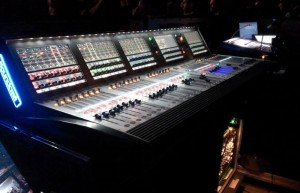 After placing each drum channel in the stereo image I usually start by gateing the kick, sub kick, tom tracks, snare top and bottom tracks. Most gates allow you to adjust the frequency of the input to allow for better accuracy of the gate sometimes know as keying. Example: Using the kick as an example sharply reduce the higher frequencies above 1k and below 50hz this will only affect the trigging of the gate and NOT the frequency of the output of the gate. Repeat this action for each drum keeping in mind what fundamental frequencies will produce the best results.
After placing each drum channel in the stereo image I usually start by gateing the kick, sub kick, tom tracks, snare top and bottom tracks. Most gates allow you to adjust the frequency of the input to allow for better accuracy of the gate sometimes know as keying. Example: Using the kick as an example sharply reduce the higher frequencies above 1k and below 50hz this will only affect the trigging of the gate and NOT the frequency of the output of the gate. Repeat this action for each drum keeping in mind what fundamental frequencies will produce the best results.
Next Check the phase relationship between the kick and sub kick. Pull up just the kick and sub kick channels both panned to the center. With a phase plugin in the sub kick channel try switching the phase leave it in the position that produces the most low end energy. Repeat with the snare top and snare bottom.
Next I will work on EQ here are some general rules.
In the drum tracks processing chain gate BEFORE you eq!
Sub-Kick- In general I drastically reduce frequencies bellow 20hz and above 125hz
Kick- Boosting 50-65hz gives you the fundamental, 2 to 5 k is where the beater attack is.
Snare top- 125hz to 250hz will warm/fatten up the snare 2 to 5k for the attack
Hat- high pass filter that reduces frequencies below 300hz
High tom- I usually find the lower resonating frequency by moving the filter in the 100 to 200hz range, attack is in the 2 to 5k range
Low Tom- low resonating frequency is in the 70 to 125hz range, attack in the 2 to 5k range
Overheads- I usually use a high pass filter reducing frequencies below 60hz, with a bell curve filter I reduce some of the frequencies in the 400hz range to reduce the boxy sound.
Room- as I usually don’t use a lot of room sound when I mix i usually use a high pass filter reducing the frequencies below 25hz.
